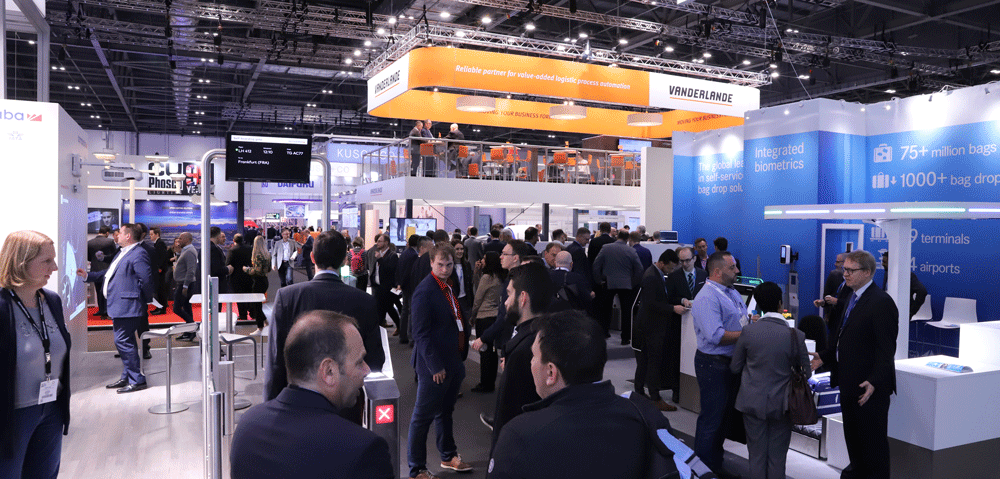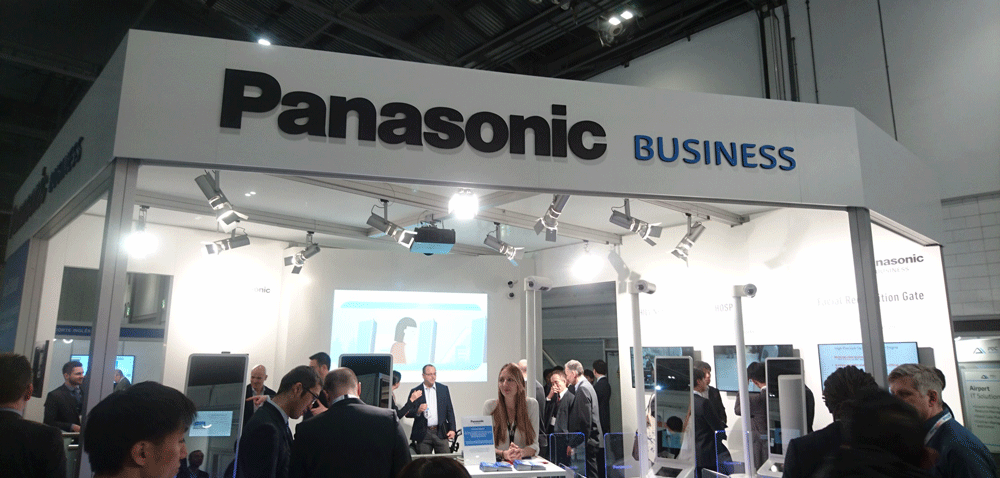I was one of over 10,000 people who attended Passenger Terminal Expo last month. Walking around the event, it struck me how much progress has taken place within the past year in terms of the sector’s readiness to adopt new technologies that will improve the passenger experience and help make smart airports a reality.
In Stockholm last year large companies and specialists showed off their new biometric-enabled solutions for passenger identification, access and service. These were typically standalone implementations, such as biometric bag drop, check-in and boarding gate. Similarly, they demonstrated solutions to monitor and manage passenger traffic flow through an airport, as well as data collection and sharing.
This year, however, it was evident that for the leading (and typically largest) companies, these new solutions are becoming much more deeply integrated into total solutions. Desks, kiosks and examples of robots are starting to become connected with security, boarding and departure, displays and signage, retail and hospitality, with a view to enabling a single point to manage airport operations more efficiently and with greater coordination.
Evidence of this is clear from the announcements made in just the past month. Vision-Box is in the process of installing biometric self-service boarding gates across JFK’s Terminal 1 for Lufthansa after a successful trial in Los Angeles. This follows trials and installations in seven additional airports globally. SITA has announced that Aegean Airlines passengers in Athens can register with a passport scan and photo as they arrive in the airport, enabling them to use its Smart Path to depart without showing further documentation. Heathrow Airport has installed a further 100 self-bag-drop machines from ICM across Terminals 2, 3 and 5 in addition to the 24 already operational in T5. We expect these to be integrated into Heathrow’s airport-wide IT infrastructure and systems to provide additional benefits.
In Singapore this is being taken further still, with a six-month trial of a contactless immigration system that uses facial and iris recognition to clear travelers at immigration without the need to present a thumbprint or passport. No advance registration is required since the back-end system can identify the person and confirm that they hold a valid passport.
The latest solutions integrate biometrics, digital identity and IoT, which can be seen in the developments and initiatives around single token passage through airports. As part of our ongoing research into smart airports and aviation, we spoke with a variety of companies in London, to discuss and experience their products and platforms and the potential for such solutions. The primary focus of our discussions were biometrics, digital identity, identity verification and mobile solutions, although the IoT was a common topic, too.

Panasonic’s demo of its One ID Solution on its booth at Passenger Terminal Expo captured much of this, showcasing how a person can move from curb to gate with facial recognition to authenticate them. I found this to be particularly relevant, as it is being deployed for the Tokyo Olympics next summer.
As well as check-in and bag drop, the One ID Solution included a mobility aspect featuring one of Whil’s wheelchairs equipped with a smartphone. The user is authenticated via their passport and facial recognition and is then able to use the automated check-in service and pass through security. At additional display points or information robots, passengers can be identified via facial recognition and assisted with personalized directions to the gate in time to board their flight. The Whil wheelchair can be summoned during this process and using the smartphone camera can recognize the passenger and carry them to their correct gate without any further instruction or input, towing any additional luggage if necessary. The FacePRO solution works with One ID to identify and track passengers to alert staff if they are lost and need assistance.
Mobile Integration Takes This to The Next Level
Heathrow Airport’s booth at Passenger Terminal Expo featured an interesting demo with Yoti, showcasing the trial that the airport has been running, using passengers’ smartphones as a means of verifying a passenger’s identity through the Yoti app, both in advance of travel and off-premise. This enables the ticket to be stored and displayed on the smartphone, which is used in tandem with facial recognition to authenticate the passenger’s identity during each touchpoint within the airport. Whilst only a demo, it offers an impressive digital experience which can be widely rolled out once the right databases and access rights are in place.

Similarly, IDEMIA disclosed that, having proven its biometric solutions for several applications within Paris airports with Air France, it is pressing ahead with a second phase centred around a mobile app for check-in and other features that will improve the passenger experience. Elenium Automation is doing something similar in partnership with Etihad Airways, with travelers registering their biometric data on their smartphone before starting a journey, which enables them to drop their bags without additional check-in, this having been done automatically via facial recognition. The bags are then assigned to that biometric token, so no tags are required, and personalized information is provided via displays within the airport.
The advantage of these off-site mobile solutions is the greater accuracy, automation and efficiency that can be gained. Airlines waste a lot of time checking that the information manually entered is correct, carrying out multiple checks of advance passenger information. Optical Character Recognition (OCR) technology, smartphone cameras and biometric sensors are now at such a level of accuracy and reliability that a travel document can be authenticated, and the passenger’s identity verified, in a quick and frictionless manner, saving staff resources and improving the passenger experience.

Despite the progress made to date, there remain barriers to overcome, notably the sharing of suitable passenger data between airlines, airports and governments, especially across international borders. The very first trial of this nature was announced only this month, with Collins Aerospace SelfPass enabling single sign-up identification to create a biometric token used at self-service check-in, bag drop and tag, security and boarding gate for both the outward and return legs of the journey. It even enables passengers with Samsung smartphones to register in advance of travel.

Further indications of market development can be detected in recent acquisitions –companies acquiring others with specialisms in new technologies is a sure sign that a market is progressing toward maturity. ICM, a leader in biometric-enabled self-bag-drop machines, was acquired by Amadeus, a leading provider of IT systems.
Thales completed its acquisition of Gemalto, adding the latter’s biometrics, identity and security capabilities to its own systems business groups. Both acquisitions, along with the high level of partnerships in evidence at Passenger Terminal Expo, show that vendors are increasingly looking to incorporate broader capabilities into their solutions as they are, in turn, incorporated into wider connected networks and systems across airport operations, much as Collins Aerospace, IDEMIA, Panasonic and SITA were showing in London.
 John Devlin is principal analyst and founder of P.A.ID Strategies. Projects he has worked on recently include future technologies for smart airports; wearable payments; virtual personal assistants; and big data analytics opportunities.
John Devlin is principal analyst and founder of P.A.ID Strategies. Projects he has worked on recently include future technologies for smart airports; wearable payments; virtual personal assistants; and big data analytics opportunities.
